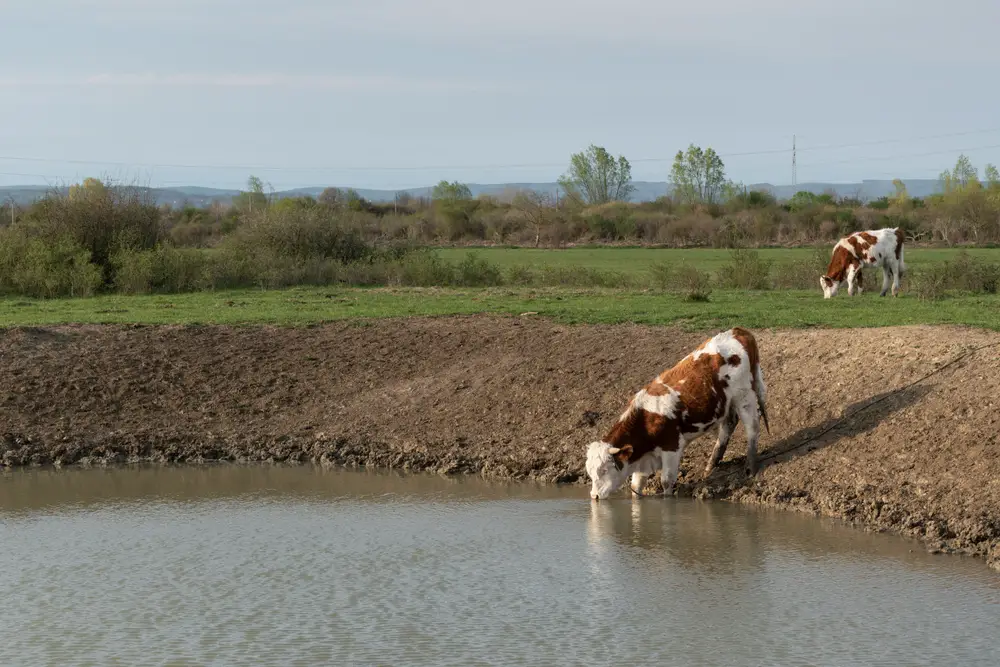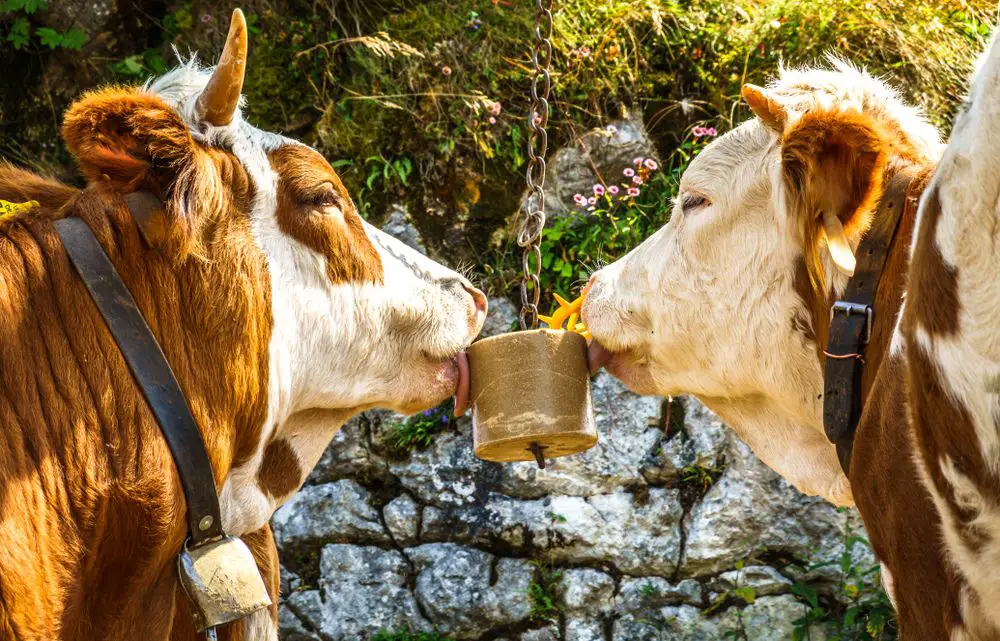Water Belly stems from the formation of urinary calculi or stones, creating a blockage inside the urinary tract and may occur in the bladder or in the urethra of cattle. A cow suffering water belly is a medical emergency that requires immediate attention from a veterinarian.
The incidence of water belly is higher in steers (males that have undergone castration) and less commonly found in intact males. Steers have a small urethra compared to heifers, cows, bull calves and bulls which is why they have a higher likelihood of developing urinary calculi.
Urinary calculi are made up of hardened masses of minerals and can have different compositions.
Struvite stones are often seen in cereal grain-fed beef cattle and are made up of magnesium ammonium phosphate while calcium carbonate stones stem from too much calcium which is more common in diets that contain large amounts of clovers and alfalfa.
Cattle that are kept on pasture may also develop a silicate type of stone formation from dietary imbalance.
Table of Contents
Causes of Water Belly in Cattle
There are many causes of water belly but one of the root causes is ruminants not drinking enough fresh water.

Water intake is vital to urinary health, as without enough water, the body becomes dehydrated and urine concentrations increase, which allows minerals to form kidney stones. These stones then travel down to the bladder where they would normally pass through the urethra, but if the bladder stones are too large they can cause urinary bladder function to cease.
Other causes that can lead to the development of water belly include a grain diet, such as that fed to feedlot cattle. Grains have a significantly higher phosphorus ratio which increases the likelihood of stone formation in feedlot animals.
Clinical Signs of Water Belly in Cattle
Lack of urination or difficulty in urination can be observed in cattle readily and are often the first clinical signs of water belly.
Cattle that stop eating and separate themselves from the herd or seem lethargic should be immediately monitored for signs of illness and further distress. Urine flow should be evident and in its absence, you will likely see further clinical signs of obstruction.
If it is observed that the animal is hunched over or standing in a stretched-out position while swishing their tail repeatedly or kicking with their back legs, they may be struggling to urinate, or only able to produce small dribbles of urine that may show traces of blood.
Other clinical signs include cattle trying to lick their abdomen, or continually laying down only to stand back up shortly afterward. These are signs of pain and it is likely they have a urinary blockage.
Distension around the abdominal cavity may be observed due to an accumulation of urine, leaking into the subcutaneous tissues or into the abdomen in the case of a ruptured urethra or ruptured bladder. This is the symptom that gave water belly its name.
A large amount of urine may also seep out of a bladder that has been stretched too thin if urine is unable to pass because of bladder stones, even if it doesn’t rupture. The good news is the bladder is often reparable if the stones are dissolved or surgically removed.
If a rupture of the bladder occurs, the animal may get some relief but will likely die within 2 days from toxemia if not treated. If the urethra ruptures, a growing bulge will be observed near the location of the tear.
There are several treatment options which will depend on the location of the stone and the damage that it has caused. Stones that lodge themselves in the urethra near the Sigmoid flexure will show urine collection near the scrotum and lower abdomen, rather than the abdominal cavity near the bladder.
A veterinarian should be able to quickly diagnose and offer treatment options based on the location and severity of the abdominal distension or through a rectum exam which can determine bladder enlargement.
Effective Treatment Options
Proper medical management of animals with clinical symptoms is paramount. Ammonium chloride is often given with large amounts of water in an effort to dilute urine and allow the stones to dissolve and pass if stones are lodged in the bladder and are caught early enough.
The most common surgical option is a Urethrostomy which is a rerouting of the urinary system to circumvent the area of blockage, and create an alternative location for urine to clear the body by permanently amputating the penis. If this surgery is successful, the prognosis is good and animals have a high survival rate.
However, this surgery performed on a bull will not allow for him to breed again.
If it is a valuable breeding bull requiring treatment, a tube cystostomy may be done instead. A veterinarian will place a tube inside the bladder temporarily to allow an escape route for urine and surgically remove the stone.
If they are able to locate and remove the stone, they will then attempt to remove the tube, and see if the bull is able to urinate normally. This operation may or may not be successful, and is a high-cost procedure.
Following a successful operation (either Urethrostomy or Tube Cystostomy) animals are given anti-inflammatory medication and antibiotics to prevent infection and ease pain symptoms and swelling.
Ways to Prevent Water Belly
All cattle should be fed a balanced diet, with a 2-to-1 ratio of calcium to phosphorus. This ratio is especially helpful in the prevention of urinary calculi.
Fresh water should always be available to cattle and the temperature of that water should be 40 to 65 degrees. Cattle do not like ice-cold water, so it is important to keep it in the optimal range to encourage them to drink regularly.
Testing the PH of urine in cattle is one way to see if stones are likely to form. If the PH of the urine is shifting into an imbalanced state and testing with high alkalinity, urine acidifiers such as ammonium chloride may be added to feed to correct the imbalance.
Another option to prevent PH from being imbalanced is to balance electrolytes by adding ions to the feed which encourages cattle to drink more water, which helps dilute urine.
Adding sodium chloride (salt) to an animal’s diet in small amounts may also encourage them to drink more.

It is important to be proactive when dealing with the potential for water belly, particularly in populations that are prone to it (steers in feedlots). Not only does prevention cost a lot less than treatment, keeping the animals healthy allows for optimal slaughter time which keeps profitability high.
FAQs
What is the Difference between a UTI and Water Belly?
UTI stands for urinary tract infection, which may or may be caused by stone formation. Water belly is the result of stones that have developed in the kidneys and created a blockage in the urinary tract, causing urine to build up and be unable to pass.
How do You Prevent Water Belly in Cattle?
The best methods are to encourage water consumption by keeping fresh water in the ideal temperature range (40 to 60 degrees F) and adding ions or small amounts of salt to cattle feed to encourage water intake.
Additionally, cattle should be given a balanced diet, that has a 2 to1 ratio of calcium to phosphorus.
